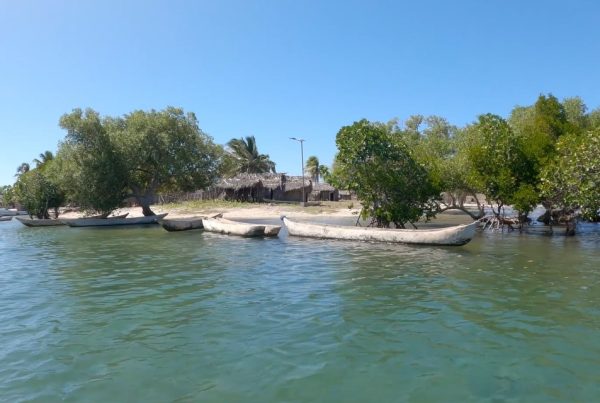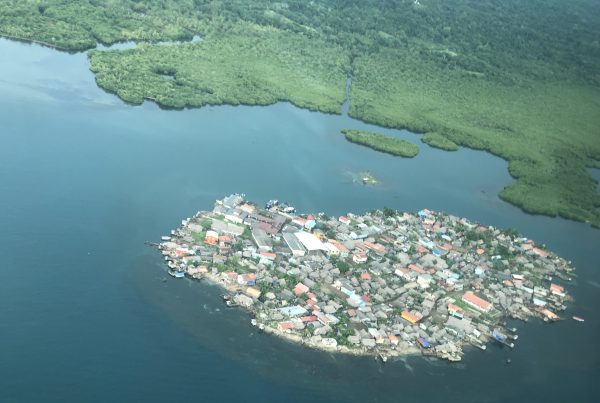“The Balngarra Clan is an indigenous Nawurrk 1 tribe from Arnhem Land in the Northern Territory of Australia.
Our homeland covers around 250 km2 of savanna, escarpment and wetlands. The Balngarra Clan’s ‘ownership’, ‘connection’ or ‘belonging’ to this land has never been broken. The Balngarra Clan use many types of fire to look after people and Country.2 Fire is used for hunting and gathering, cooking, keeping plants and animals healthy, and clearing paths for walking and is important for ceremony. In the cool part of the dry season, somewhere between April and August, in our language 3 we call it marluwurru. When we see spear grass, gardaykkah 4 flowering, when we are touched by that wind feeling, cold weather is coming up – gabekbek. That means it is time to go and burn, to ‘smoke up’ the Country. We never leave fuel load to build up because we know that the next season coming will be warlirr (hot weather) and more fuel of dry grass, leaves and branches will build up on the ground and we get unmanaged wildfires.
Our fire is like a treasure. When we do traditional fire management we always get rewarded; our Country gives us back animals, bush tucker 5 , and we can collect spears from the jungle. Our Old People looked after it the proper way. Burning at the right time is not dangerous.
Then one time, these Balanda 6 scientists were watching Bi 7 burning Country. They realised that our traditional fire management was not only good for biodiversity, but also reduced the greenhouse gas and carbon dioxide that gets put into the atmosphere by unmanaged wildfires.8 9 10 Bi started to make partnerships with fire scientists and worked together to measure all the trees and collect data from the monitoring sites. In the late 1990s we started the West Arnhem Land Fire Abatement (WALFA) project.11 12 Today, we are negotiating agreements with all of the indigenous ranger groups in Arnhem Land to join the Arnhem Land Fire Abatement project (ALFA). This will cover an area of around 120,000 km2, including hundreds of indigenous clan groups. Every year we bring all the rangers, scientists and knowledge holders together to plan for burning at the right time. 13ALFA has a board that watches over the project and we use a formula to split the income equally. However, boundaries do not worry us. We want to manage that country without lines. Because when you put lines, draw boundaries on a map, that is the Balanda way.
As soon as the fire projects started to grow, all the rangers received training from ‘accredited trainers’. They taught us how to fight fire. All the smoke money that we were creating was going back into rangers fighting fires. One time I was watching Traditional Owners using fire to do hunting and gathering on their Country. The rangers started to worry that this Traditional Owner fire might grow into a wildfire. So they got a helicopter, flew over and put it out. That is wrong. In Bi culture we never fight fire. That is not the way of Nawurrk tribes. We just make fire, not put him out. So this made me stop and think. Look back to that Country and to the Traditional Owners.
Bi did not work closely with scientists on developing the carbon accounting methodology. We only did field work with scientists. Just recording and measuring, and guiding scientists to different places. We did not get proper pay. All the science work we did out in the field, carrying all the equipment and tools with scientists, we only got CDEP 14money. Scientists and politicians set up the carbon accounting methodology and gave us this rule saying we can only burn every year in May, June and July. The 1st of August is the deadline to stop burning or we will get a penalty. 16 are making our people and our Country sick. They are overcrowded with lots of different clans, which creates social problems. It makes us worry. But the good news is that from smoke money some of our families are getting back to Country. Not only do carbon projects help us to stop global warming, if they include Traditional Owners properly, they can help us look after our health, our language, our ceremony, the biodiversity that lives with us on Country, and provide good jobs for our people.”
Image caption: Integer posuere erat a ante venenatis dapibus pore veli. Etiam porta sem malesuada magna mollis euismod.
Author
- Forest Peoples Programme
Ecosystems
- Tropical forests
Topics
- Conservation and sustainable use
- Ecosystem restoration
Type
- Long-form
Date
- This case study forms part of LBO-1, originally released in 2016.
References
- Footnote content goes here Nawurrk tribes are experts in the use of many different types of fire to achieve particular outcomes on Country, especially for hunting animals
- The English word Country is used to refer to Indigenous peoples’ clan estates. In Rembarrnga, this is known as dawal.
- The language spoken by the Balngarra Clan is Rembarrnga.
- Stringybark (Eucalyptus tetradonta)
- Bush tucker is an Australian term used to describe wild harvested foods
- Balanda is the word used by indigenous people from the Arnhem Land region to refer to non-Indigenous people.
- The word used by indigenous people who speak the Rembarrnga language to refer to themselves
- Fitzsimons, J. et al. Insights into the biodiversity and social benchmarking components of the Northern Australian fire management and carbon abatement programmes. Ecol. Manag. Restor. 13, 51–57 (2012).
- Culture, ecology and economy of fire management in North Australian savannas: rekindling the Wurrk tradition. (Csiro Publishing, 2009) Yates, C. P., Edwards, A. C., & Russell-Smith, J.
- Big fires and their ecological impacts in Australian savannas: size and frequency matters. Int. J. Wildl. Fire 17, 768–781 (2009).
- Fitzsimons, J. et al. Insights into the biodiversity and social benchmarking components of the Northern Australian fire management and carbon abatement programmes. Ecol. Manag. Restor. 13, 51–57 (2012).
- Culture, ecology and economy of fire management in North Australian savannas: rekindling the Wurrk tradition. (Csiro Publishing, 2009)
- The income generated comes from a range of sources, including several market-based voluntary agreements with the private sector and the Australian Government’s Emissions Reduction Fund
- CDEP stands for Community Development and Employment Programme, which was a former Australian Government welfare programme targeted specifically at employment and development for indigenous Australians
- Australian Government. Savanna fire management. (2015) at <http://www.environment.gov.au/climate-change/emissions-reduction-fund/methods/
savanna-burning>[/efn_note]Today, we are making some good money from fire work. We are making satellite ranger bases on each of the clan estates in the Arafura Swamp region in Arnhem Land. These satellite bases are not getting any funding from any government organisation. They are running on bushfire smoke money. Traditional Owners are being paid a salary and have equipment to support burning. This means that we can make sure that rangers are not acting like heroes by going and fighting fires, but that Traditional Owners are taking the lead in looking after their Country.
It is really important for Traditional Owners to have jobs on Country. Country is not a place for weekends, it is our home. The towns that the governments are trying to make us live in, ‘growth towns’ 15Department of Community Services. Major remote towns – Properly planned and designed towns. (2013) at <http://www.drdia.nt.gov.au/about_us/
regional_services/major_remote_towns>


